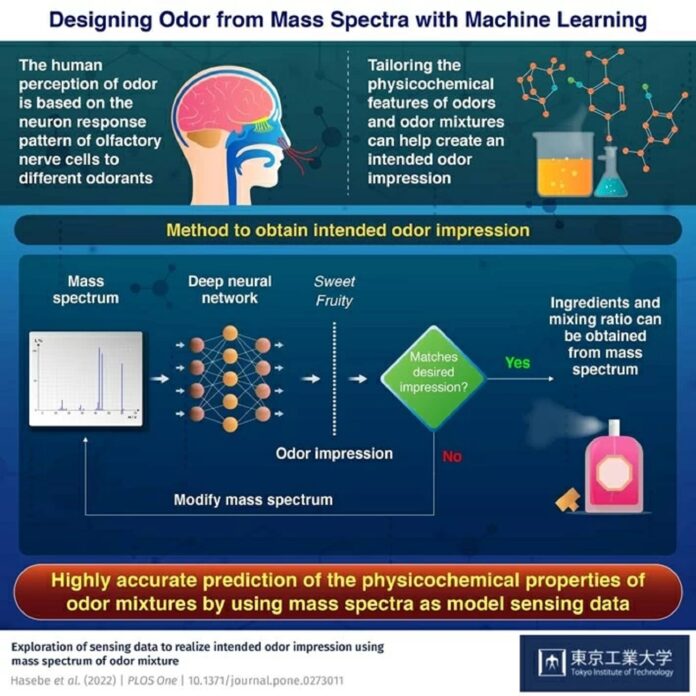The sense of smell is essential, partly close to the instincts of animal a species, to detect dangers such as natural enemies and poisonous substances. Humans perceive hundreds of thousands of odorants through about 400 types of olfactory receptors expressed in olfactory nerve cells. These olfactory impressions of odorants on nerve cells are associated with their molecular features and physicochemical properties. This makes it possible to tailor odors to create an intended odor impression.
At the moment, only physicochemical characteristics of odorants may be used to predict olfactory impressions. However, that approach cannot anticipate the sensory data, which is essential for producing smells.
Scientists from the Tokyo Institute of Technology (Tokyo Tech) have used the creative tactic of solving the inverse problem to address this difficulty. This approach predicts molecular properties based on the odor impression rather than the scent from molecular data. This is achieved using standard mass spectrum data and machine learning (ML) models.
They used a machine-learning-based odor predictive model to obtain odor impressions. The model helps them predict the mass spectrum from odor impression inversely based on the previously developed forward model.
The mass spectra of odor mixtures are derived by a linear combination of the mass spectra of single components. This simple way makes it possible to prepare the predicted spectra of odor mixtures quickly as well as to estimate the necessary mixing ratio—a crucial element in the recipe for creating novel odors.
Professor Takamichi Nakamoto, the leader of the research effort by Tokyo Tech, said, “For example, we show which molecules give the mass spectrum of apple flavor with enhanced ‘fruit’ and ‘sweet’ impressions. Our analysis shows that combinations of either 59 or 60 molecules give the same mass spectrum as the one obtained from the specified odor impression. With this information, and the correct mixing ratio needed for a certain impression, we could theoretically prepare the desired scent.”
“This novel method described in this study can provide highly accurate predictions of the physicochemical properties of odor mixtures, as well as the mixing ratios required to prepare them, thereby opening the door to endless tailor-made fragrances.”
Journal References:
- Daisuke Hasebe, Manuel Alexandre, Takamichi Nakamoto. Exploration of sensing data to realize intended odor impression using mass spectrum of odor mixture. PLoS ONE 17(8): e0273011. DOI: 10.1371/journal.pone.0273011
